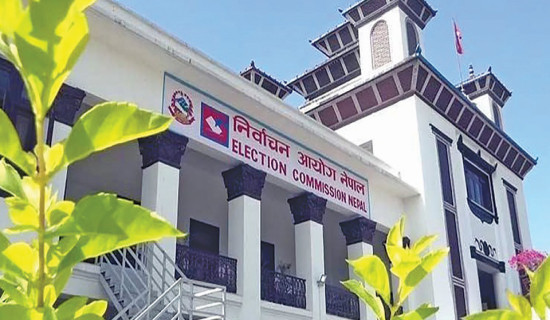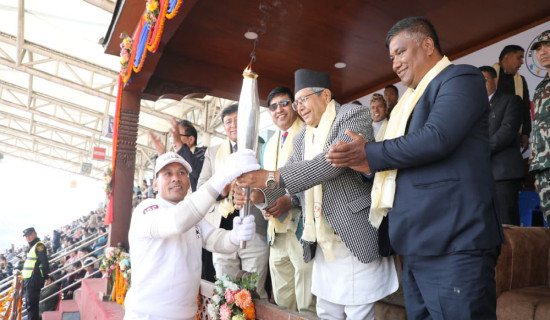- Saturday, 27 December 2025
Drying up of springs affects supply of water
Kathmandu, Aug. 24: Over the past 10 years, around 20 per cent of water springs have dried up across Nepal, and about 50 per cent have seen a reduction in their flow. This is a significant issue because roughly 10 million people in Nepal depend on spring water for drinking, household use, and some irrigation, experts said.
While efforts are being made to address this, the water resources are scattered and are not enough to stop the problem. Drying springs are causing serious water problems that affect people’s lives and jobs, especially for women and girls who are burdened with getting water for their families, they said.
This week, the world celebrated World Water Week, 2023, and experts voiced their worries regarding the diminishing springs across the Hindu Kush Himalayas (HKH). This development is causing significant fears among the communities downstream who rely on the water resources originating from the HKH mountains.
According to Karishma Khadka, Springshed Management Associate at International Centre for Integrated Mountain Development (ICIMOD), springshed management is a solution for addressing the local water insecurity aiming not only to improve the spring discharge and water quality but also to provide other benefits to local communities such as improving their access to clean water, improving agricultural productivity, and enhancing livelihood. It also contributes to stream flow, and landscape restoration.
“Climate change and people’s actions have made springs dry up. Springshed management is a way to fight this and make sure we have enough water,” Khadka said.
Khadka said that springs have always been the main source of drinking water, but now they’re drying up in the HKH region, causing water stress. To fix this, ICIMOD and others are following a plan to bring back drying springs. This plan blends science and community action. It’s already working in Bhutan, India, and Nepal, and could work in more places to help with water, she said.
In 2018, a report by Niti Aayog in India also mentioned that Nepal is facing a tough situation. About 70 per cent of the springs in five areas of Western Nepal are losing water flow, which is not a good sign.
Community involvement is crucial for springshed management, Khadka said. Local residents should be involved right from the start. “In Namobuddha Municipality at Kavrepalanchowk, the springs that used to provide drinking water were in trouble. In a small area, 22 out of 50 springs had dried up. The local groups, the government, and others joined forces to revive these springs. The efforts are paying off – the springs are flowing once again,” she added.
“This effort used a simple plan with steps like understanding the land, finding where water goes, and putting water back where it’s needed. Local people learned how to do this and are watching the springs to make sure they stay healthy. Women were a big part of this work, which made it better for the whole community,” Khadka added.
Talking to the community, working together with the government, and teaming up with local groups are super important to keep springs healthy, she emphasized.
According to Bandana Shakya, Action Area Coordinator, Restoring and Regenerating Landscapes at ICIMOD, Nepal has a lot of good things like forests, wetlands, rivers, and farms, but it also faces challenges due to things like climate change, pollution, and changes in how land is used.
Landscape management helps keep these services going, and it involves everyone – rich, poor, and everyone in between. Different parts of society, like forests, health, culture, and more, need to work together to find solutions. Working together and having a common goal is very important for restoring landscapes.
In our quest to restore and regenerate landscapes, ICIMOD as a regional, knowledge and intergovernmental organisation, has created a dedicated action area, “Restoring and Regenerating Landscapes,” she added.
While talking about the access to clean drinking water to people in urban areas, water and climate change expert Ajay Dixit said even though the distribution of water in both urban and rural areas has been improving, the way water is distributed has been impacted by the floods and drainage systems in urban regions.
He emphasized the importance of treating faecal contamination in water and properly treating industrial discharge before releasing them into rivers.







-square-thumb.jpg)









